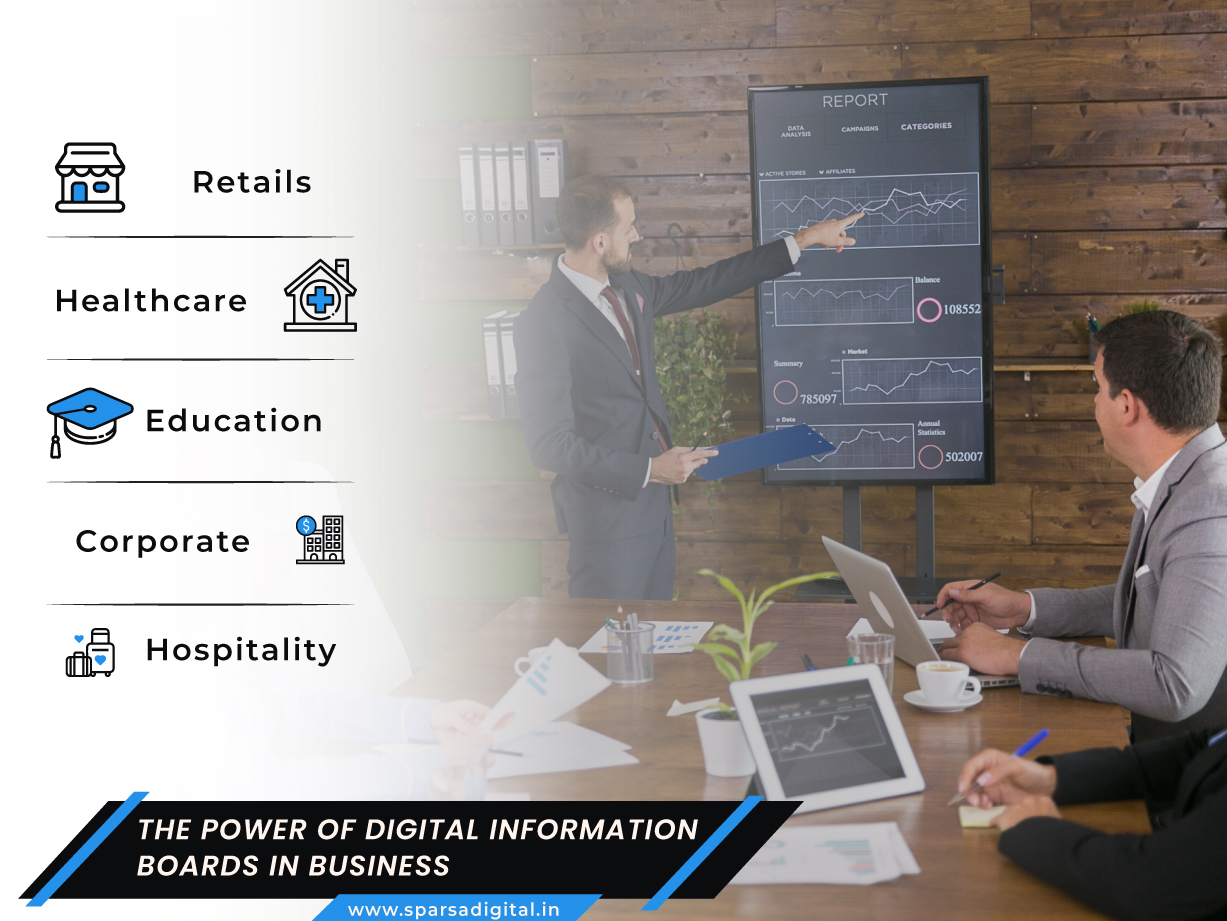In today’s fast-paced and digital-driven world, businesses are constantly seeking innovative ways to communicate effectively with their employees, customers, and stakeholders. Digital notice boards and Digital information boards have emerged as powerful tools that enable businesses to deliver timely and engaging messages. In this blog, we will explore the importance of digital notice boards and Digital information boards for businesses, their benefits, and how they can revolutionize communication strategies.
The Rise of Digital Notice Boards and Information Boards
Traditional notice boards and information boards have long been used in businesses to display important messages, announcements, and updates. However, with the advent of digital technology, these static boards have evolved into dynamic and interactive displays. Digital notice boards utilize screens or electronic displays to present information in a visually appealing and attention-grabbing manner. They can be found in various business settings, including offices, retail stores, educational institutions, healthcare facilities, and public spaces.
Benefits of Digital Notice Boards and Information Boards
Instantaneous and Timely Communication
One of the primary advantages of digital notice boards and digital information boards is the ability to deliver information in real-time. Businesses can instantly update and display important messages, announcements, news, and alerts. This ensures that employees, customers, and other stakeholders receive timely information, leading to improved communication flow and increased efficiency.
Engaging and Eye-Catching Displays
Digital displays provide businesses with a versatile platform to create visually appealing content that captures attention. They allow for dynamic content such as images, videos, animations, and interactive elements. The engaging nature of digital notice boards and digital information boards enhances message retention and improves the overall impact of communication.
Centralized Control and Content Management
Digital notice boards and digital information boards can be centrally controlled and managed. This means that businesses can update and schedule content remotely, eliminating the need for manual changes. With centralized control, businesses can ensure consistent messaging across multiple locations and have better control over the displayed information.
Flexibility and Customization
Digital displays offer businesses the flexibility to customize content based on their specific needs. Whether it’s displaying employee achievements, sales figures, promotional offers, or safety reminders, businesses can tailor the content to their target audience and objectives. This customization capability enables businesses to deliver relevant and personalized messages.
Improved Internal Communication
Digital notice boards and Digital information boards play a vital role in internal communication within organizations. They serve as a platform to share company updates, employee recognition, policy changes, training materials, and event announcements. By providing clear and consistent information, these boards foster a sense of transparency, engagement, and unity among employees.
Enhanced Customer Experience
In customer-facing environments such as retail stores, digital information boards can elevate the customer experience. They can display product information, promotions, upcoming events, and interactive maps. These visually appealing displays not only attract customers but also provide them with valuable information, leading to informed purchasing decisions and a positive brand experience.
Mobile and Remote Management
Businesses may adopt mobile applications or remote management systems to update and control digital notice boards and digital information boards. This allows authorized personnel to manage content and schedules conveniently from their mobile devices, increasing flexibility and efficiency.
Applications in Various Industries
Digital notice boards and Digital information boards have wide-ranging applications across industries:
Retail
In retail settings, digital information boards can be strategically placed to showcase product details, pricing, offers, and brand messaging. They create an immersive shopping experience, attract customer attention, and drive sales.
Healthcare
Digital notice boards in healthcare facilities can display important announcements, patient information, appointment schedules, and health tips. They contribute to efficient patient flow management and enhance the overall patient experience.
Education
Educational institutions can utilize digital notice boards to share class schedules, exam notifications, event updates, and general announcements. These boards improve communication between students, teachers, and staff.
Corporate Offices
Digital notice boards in corporate offices can communicate internal news, employee achievements, upcoming meetings, and organizational updates. They foster a sense of community and keep employees informed and engaged.
Hospitality
In hotels and restaurants, digital information boards can showcase menus, daily specials, upcoming events, and local attractions. They enhance guest experiences and promote upselling.
Conclusion
Digital notice boards and digital information boards have become indispensable tools for businesses across industries. Their ability to deliver instantaneous and engaging messages, along with the benefits of customization, centralized control, and improved communication, make them crucial in today’s fast-paced business environment. As technology advances, businesses can expect even more innovative features and applications, further enhancing the power of digital displays in revolutionizing communication strategies. Embracing digital notice boards and digital information boards can provide businesses with a competitive edge and contribute to a more connected and informed workforce and customer base.

